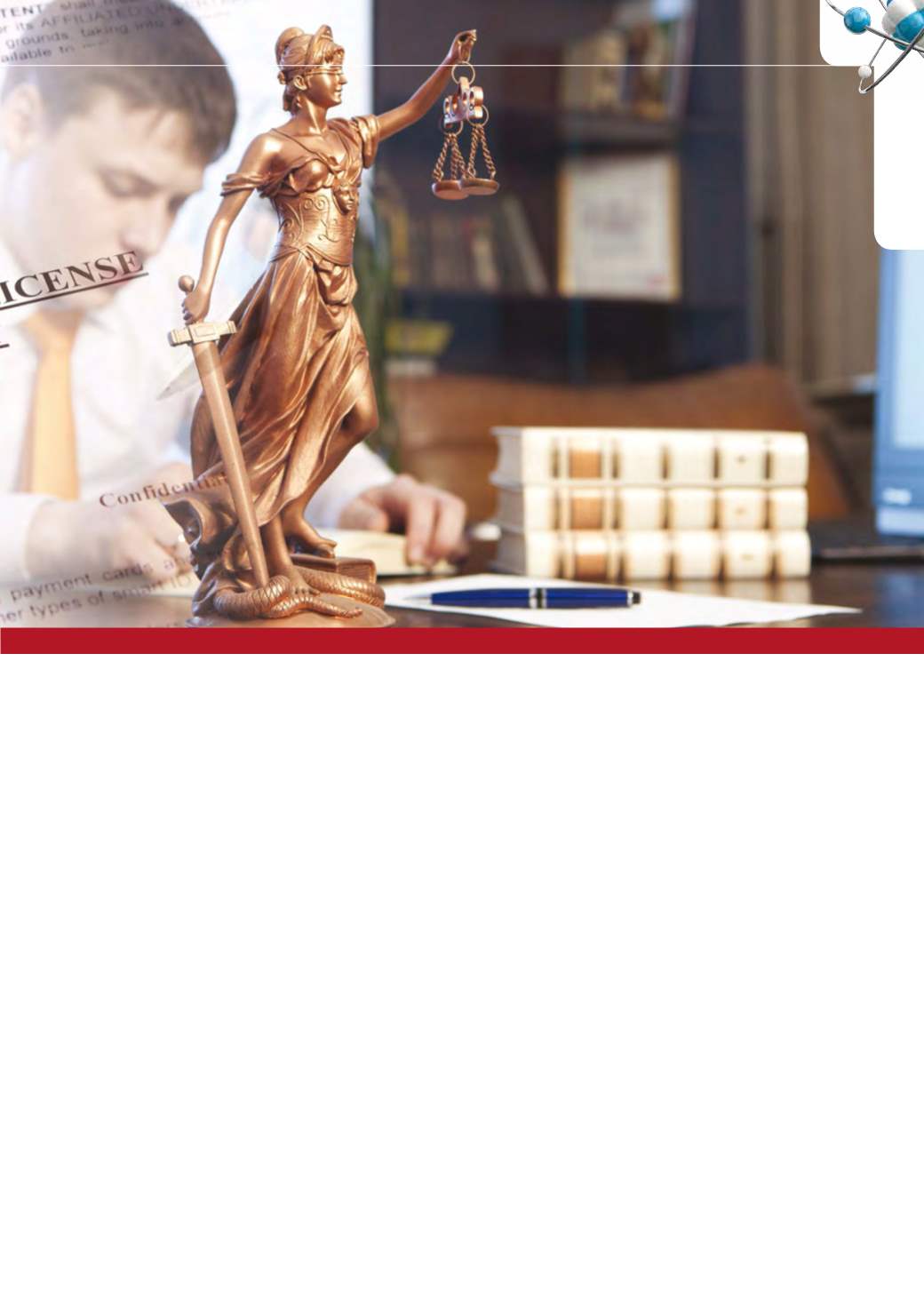

PETROCHEMICALS
Chemical Technology • December 2015
5
COVER STORY
the world before the first patent application disclosing the
invention was filed.
In practice, this means that any single document which
discloses the subject matter of one claim of the patent be-
ing examined is a bar to the patentability of the whole of the
claimed invention.
The subject matter of a patent is deemed to involve an
inventive step if it is not obvious to a person skilled in the
art, regarding any matter which forms, immediately before
the priority date of the invention, part of the ‘state of the art’.
In practice, this allows an Examiner to cite several
documents together against a patent application if he or she
thinks that, (vis-à-vis the disclosure contained in all of these
documents), a person with extensive knowledge of the said
invention, would find the invention obvious. It is obvious then
that an Examiner would have to be such a person! Typically,
Examiners will cite existing patents or patent applications
as well as articles from scientific journals against a patent
application.
Based on the conducted search and a critical examina-
tion of the documents found, the Examiner will issue an
examination report which details how the documents affect
the patentability of the invention or patent application under
examination.
In addition, there are certain inventions which are not
patentable in terms of the South African Act, regardless of
whether or not they are new and inventive. The applicant
for a patent of any of the following types, must be informed
accordingly: a discovery; a scientific theory; a mathematical
method; a literary, dramatic, musical or artistic work or any
other aesthetic creation; a scheme, rule or method for per-
forming a mental act, playing a game or doing business; a
program for a computer; or the presentation of information.
The applicant will have a chance to respond to the Ex-
aminer’s report. Arguments in support of the patentability
of an invention are also generally submitted in response to
an examination report. A second report will then be issued
informing the applicant whether his or her response has
overcome the Examiner’s objections. What happens after
this, if the Examiner decides not to allow the application to
proceed to grant, differs from country to country.
Potential drawbacks
The forthcoming changes in the local Act mean that the official
fees payable to the South African Patent Office when filing
a patent application will have to be dramatically increased.
In addition, a patent attorney will need to be consulted to
prepare a response to an examination report, adding further
costs to those related to the filing of the application.
Substantive examination will prolong by a significant pe-
riod, the time it takes for a South African patent application
to proceed to grant, substantive examination naturally taking
longer than merely a formal examination. Additionally, South
African courts currently have no judges specifically trained to
hear patentmatters. Perhaps training anexpert panel of judges
to adjudicate upon patent matters would have been a more
sensible way of testing the validity of South African patents.
If you need advice on patents,
then think of us first, Hahn &
Hahn,
Hahn@hahn.co.za.
















